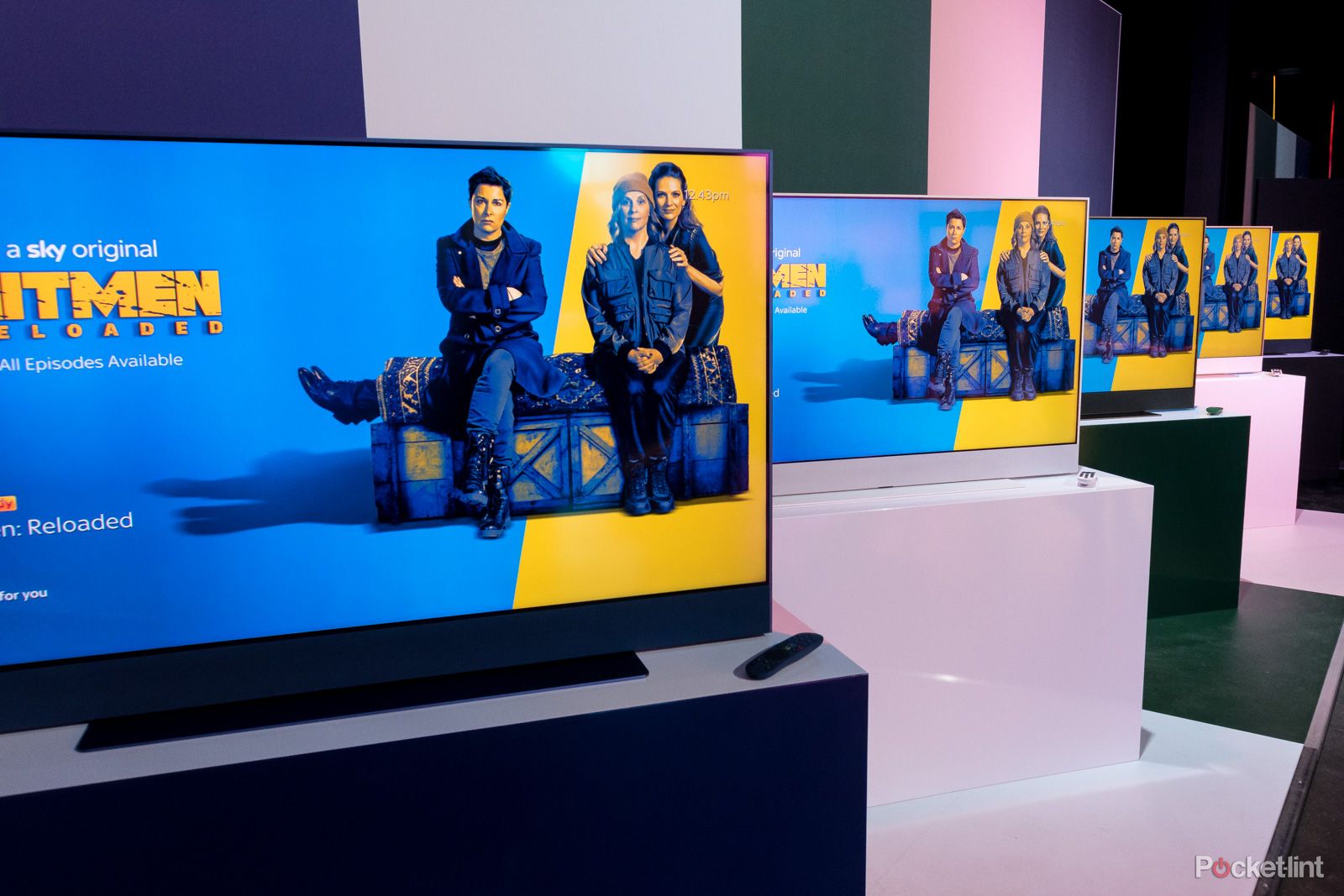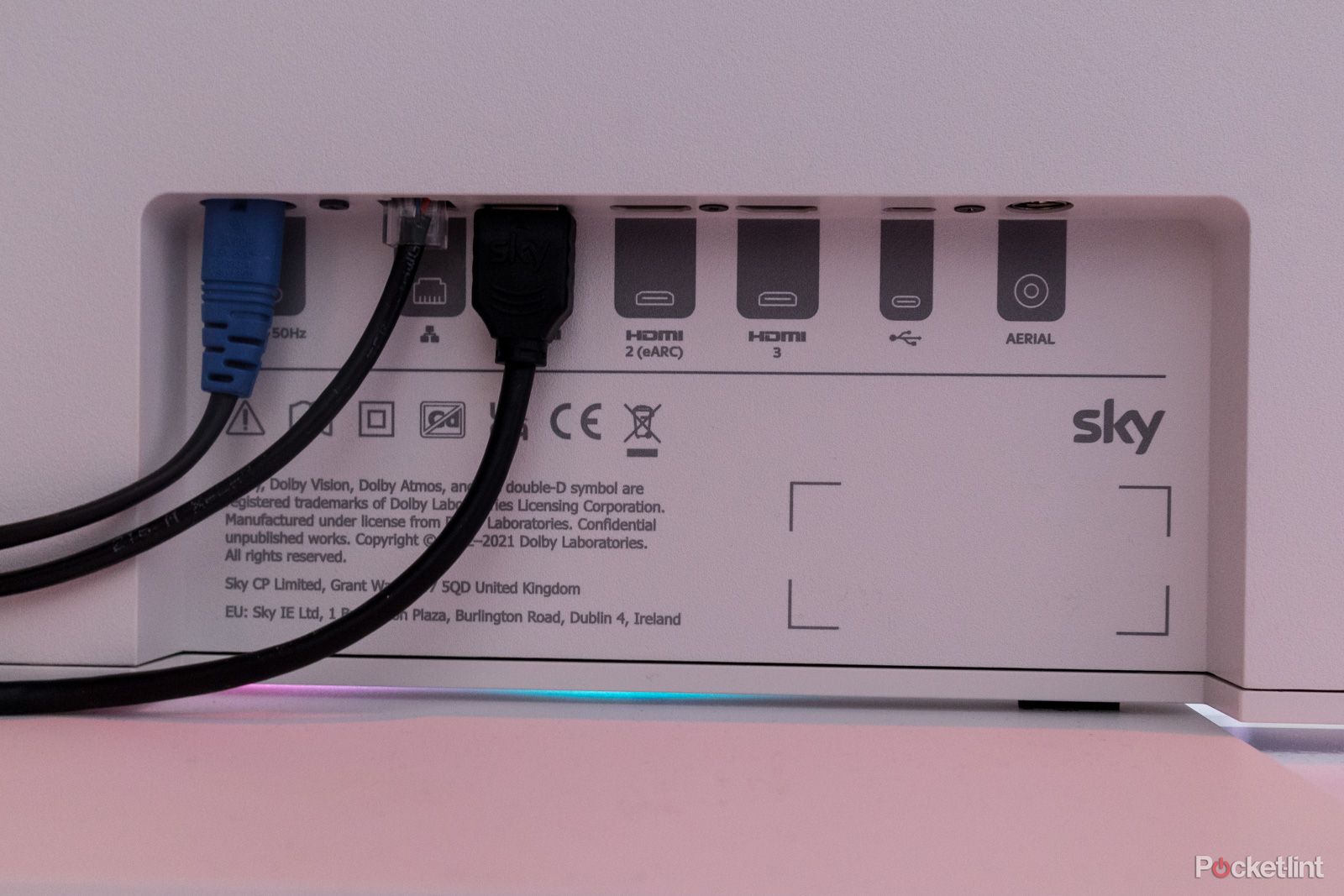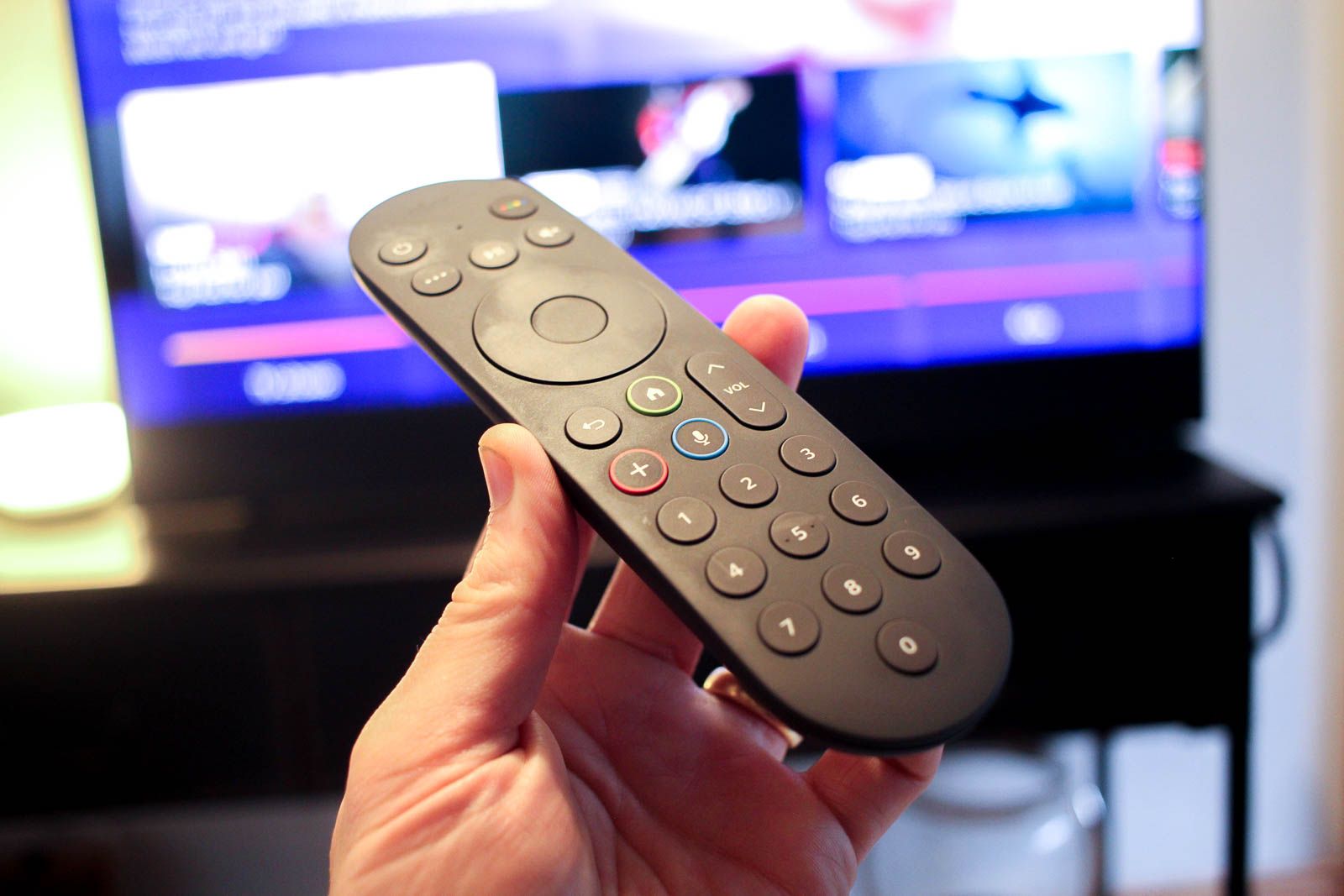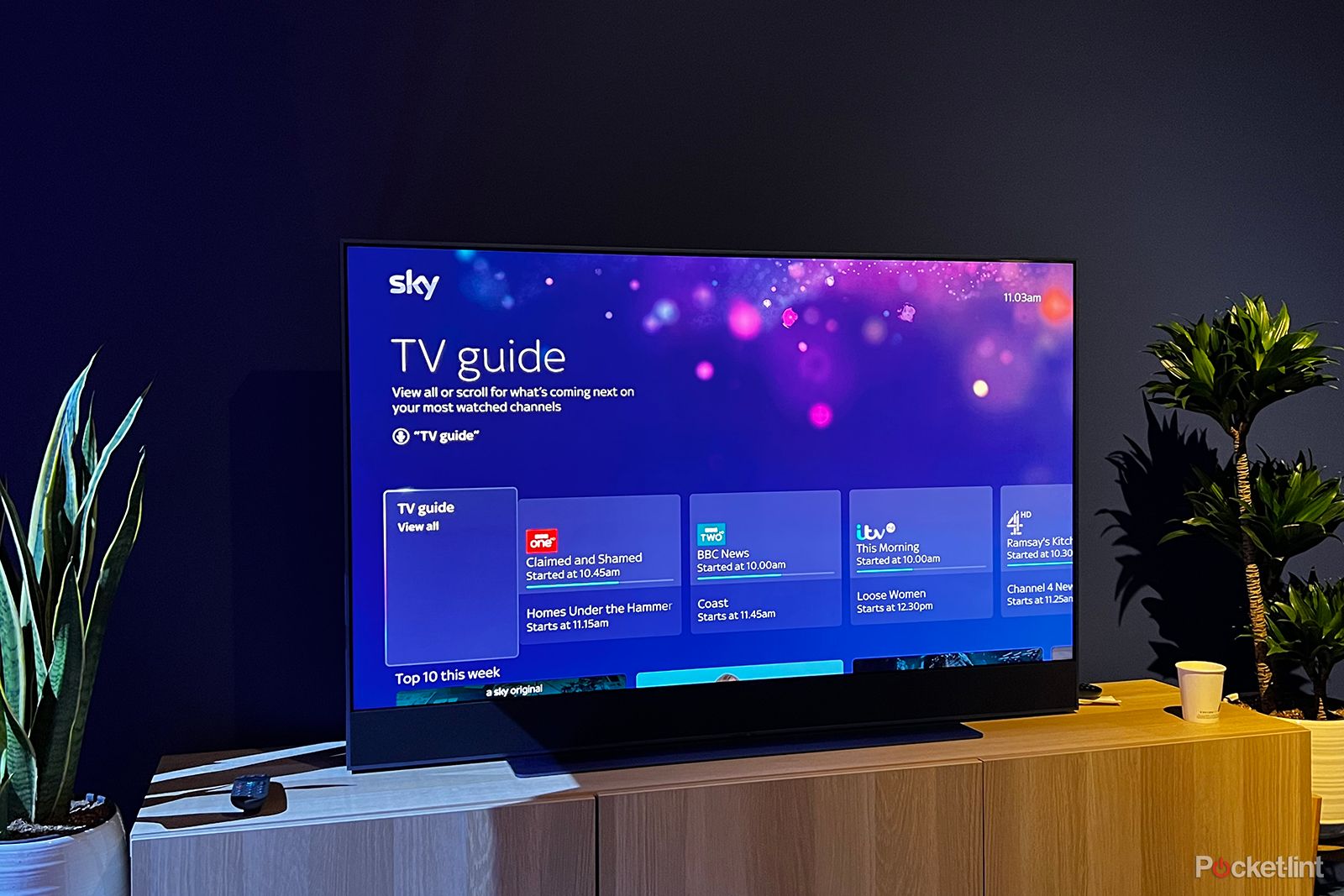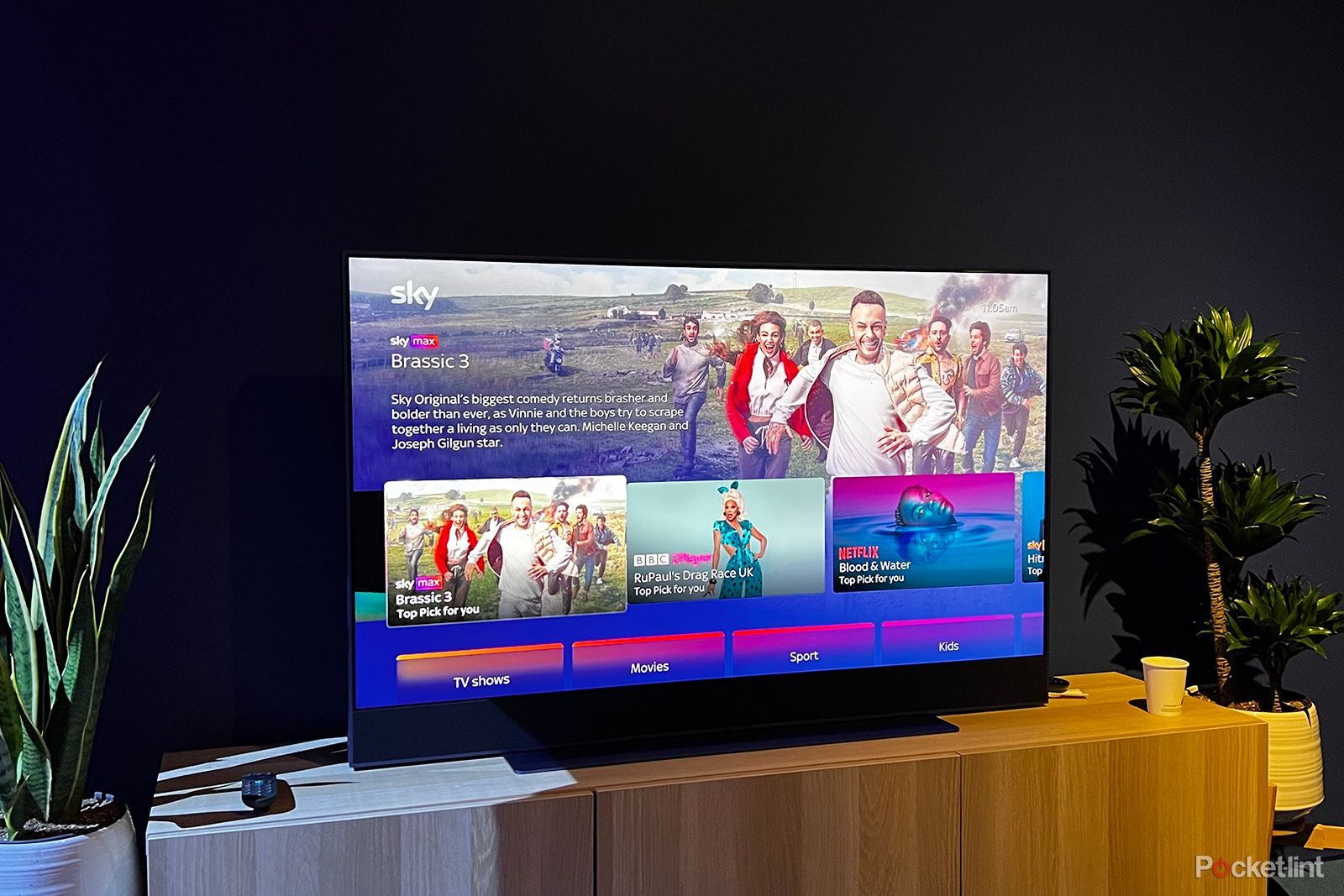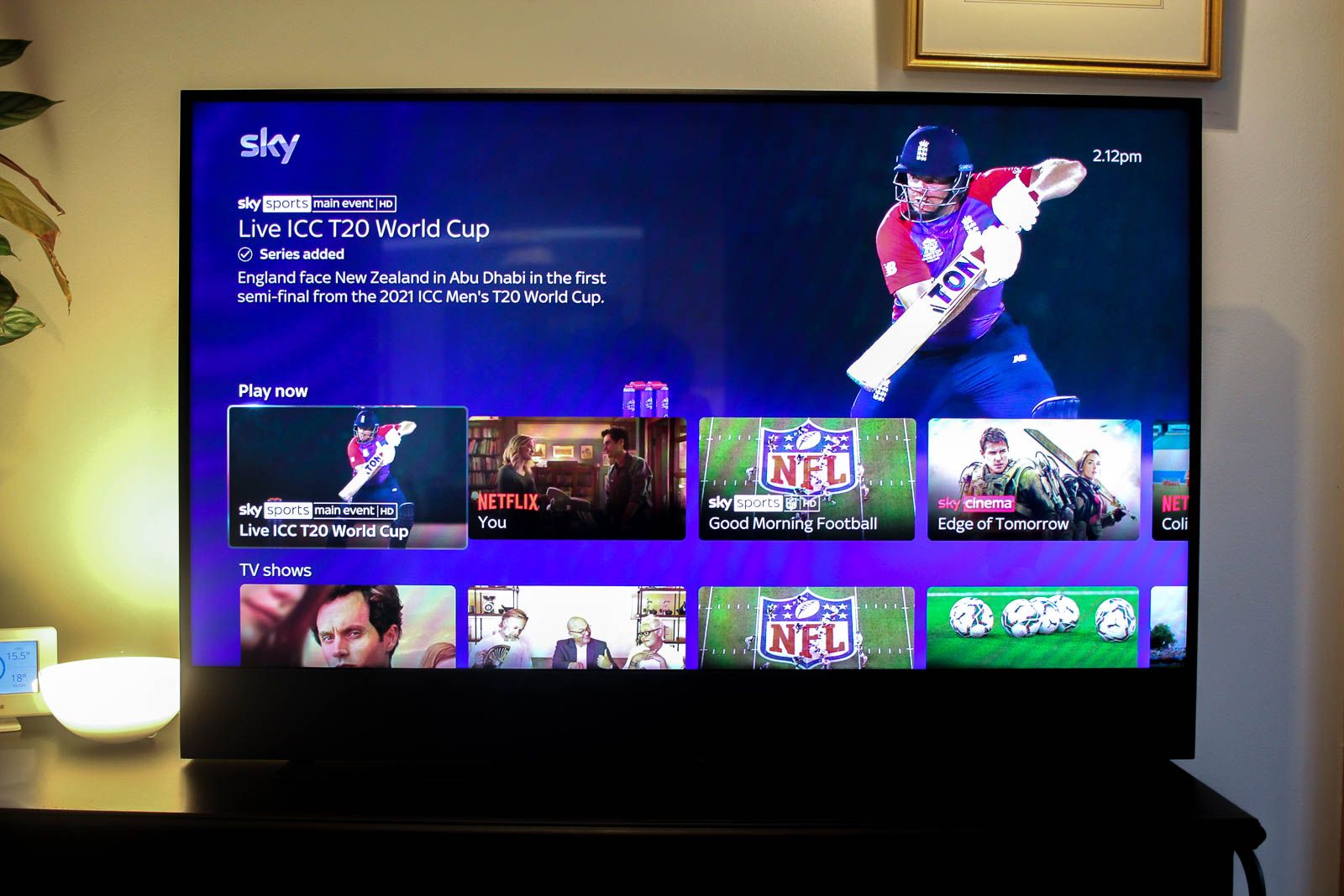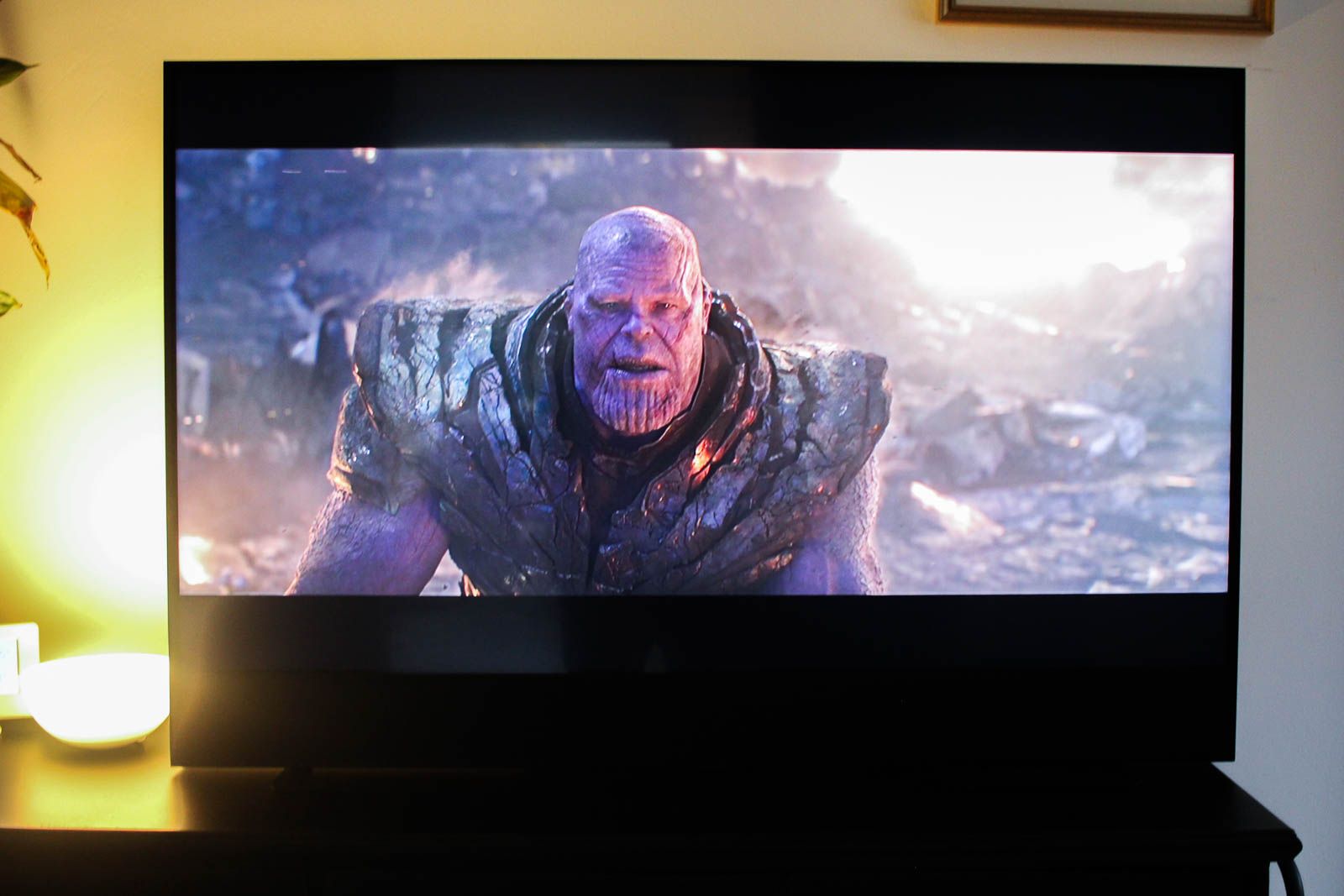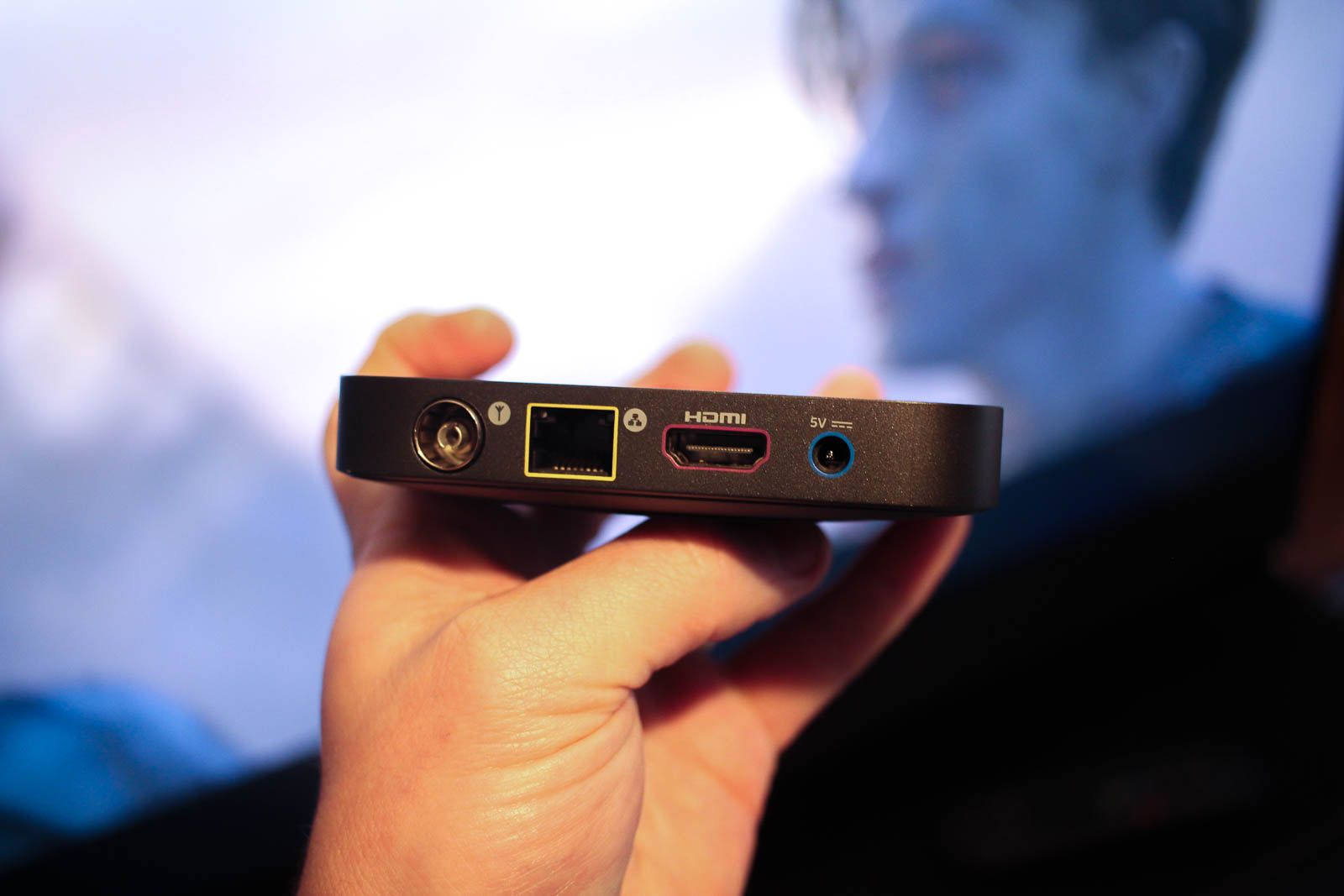Sky has finally managed to find a way to deliver all its Sky channels to customers without the need for a dish attached to the outside of your property. It's called Sky Glass, an all-in-one television solution, but can this new approach deliver the same seamless experience as Sky Q or is it simply short of the mark?
Our quick take
As a concept we love the idea of what Sky Glass is trying to achieve. For many it will be a great way to get various streaming services with little fuss and all without the need for a dish installation. The design and approach is akin to what Apple would create if it were to launch a standalone TV.
But what Sky has delivered doesn't truly live up to the concept's potential. Glass is very much a first-generation product and therefore it's prone to issues and things that still need to be ironed out.
Fortunately, however, Sky is already bringing improvements. We've already received an update that has fixed a number of our initial concerns – including improvements to the picture quality and a few other bugs. Just as Sky Q has improved over time, so too should Glass.
Even so, on the hardware side of things Glass can't replace a top-end setup, as bolted together from various manufacturers. Maybe a Glass 'OLED Pro' model will one day plug that gap?
We look forward to seeing the no-fuss approach of Sky Glass evolve, but for the moment there are just too many foibles to wholeheartedly recommend it. We're hoping that in six months and after a couple of additional software updates that many of our concerns will be resolved. But, right now, it needs a lot more work to get our full approval.
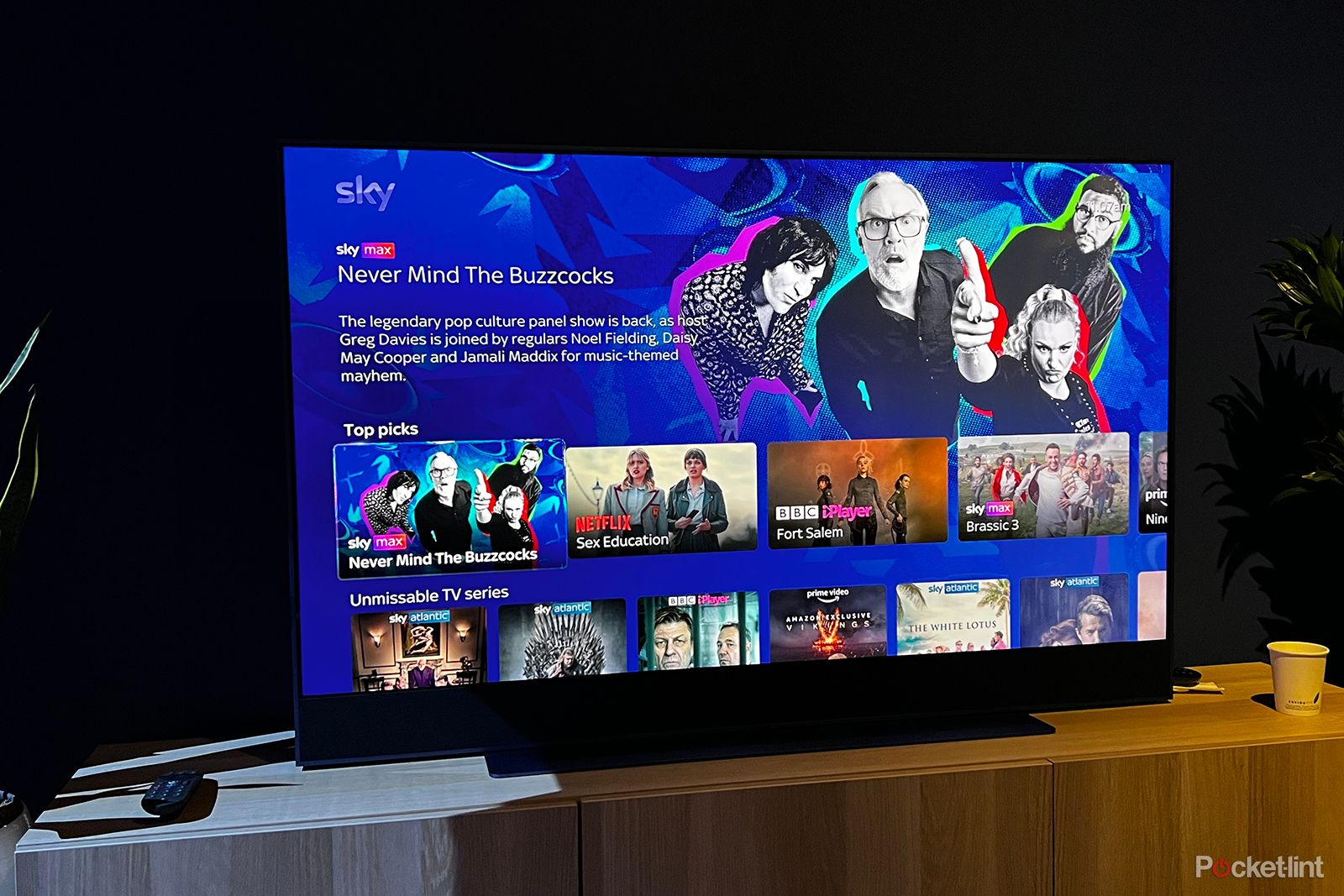
Sky Glass - 3.5 / 5
| FOR | AGAINST |
|---|---|
|
|
Sky Glass
What is Sky Glass?
It's worth pointing out what Sky Glass is and what it isn't. Unlike previous Sky hardware set-top box offerings – like Sky Plus or Sky Q – Glass is a television (in 43-, 55- and 65-inch size options) with the Sky box integrated. Content is streamed over your broadband connection rather than a cable via a satellite dish.
The TV is a Quantum Dot LED TV (a bit like Samsung's QLED models), with a 4K Ultra HD resolution and high dynamic range support (in HDR10, HLG and Dolby Vision form). It also has a full Dolby Atmos sound system incorporated, with six speakers, including two upfiring Atmos drivers built into the casing, plus an integrated woofer for handling bass.
You can get a Sky Stream puck (basically a set-top box) for additional TVs in your home, but you can't get these set-top boxes on their own without getting the Sky Glass TV first.
Sky Glass
What Sky Glass isn't, however, is a standalone set-top box that can be simply swapped in to replace your Sky Q box or the Sky Q mini boxes. Glass is, indeed, an integrated TV product.
A strong design
- Dolby Atmos speakers built in
- Screen size options: 43in, 55in, 65in
- 3 HDMI ports, Ethernet, Wi-Fi, Bluetooth
- Five different colours: white, black, blue, green, pink
Sky clearly wanted to make a major impression with its first TV, so it looks like few others on the market – but it's considerably thicker, not that this should put you off purchase as it'll probably be backed up against a wall anyway.
The angular TV design looks, in many respects, like a supersize Apple iMac, with the screen sited above a speaker grille. And, continuing that theme, there are different coloured options to choose from – white, black, blue, green and pink – to give distinctive style.
The TV itself can each be customised further through a separate speaker grille cover that attaches magnetically on top of the grille that's already there. And just as the company used to do with the Sky Plus designer boxes we can easily see there being artist, film, and celebrity tie-ins later down the line.
Included in the box is a countertop stand that matches the colour of the set. Alternatively you can use the integrated standard VESA-friendly mount built into the back to hang the set onto a wall. The stand is minimalist to say the least, raising the television off the surface by millimetres, and unlike the iMac it doesn't support rotations for angled viewing.
Hidden out of sight there are three HDMI 2.1 ports in total - one with eARC. However, despite their 2.1 designation, the TV cannot support 120Hz, so next-gen gamers won't be able to make maximum use of their PlayStation 5 or Xbox Series X consoles (they'll connect, but 60Hz is the maximum output, and there's no ALLM or VRR).
There's also an Ethernet socket for wired connection, along with Wi-Fi and Bluetooth support – so you don't have to hard-wire – plus an aerial jack as a backup source.
Because of the built-in speaker system the set is considerably fatter than the state-of-the-art televisions we've had in the office over the last couple of years, but we don't actually think that's a bad thing. In practice it means the TV can be setup literally anywhere in your house where you've got good Wi-Fi and a power socket. And because you don't need all the usual paraphernalia like an additional speaker or set-top box, it's a clean install too. Yes, for a brief time we had a TV in our hallway, because, well, why not?
Hello Sky
- Included remote is based on the Sky Q remote
- Voice-activated by saying "Hello Sky"
There are two ways of controlling Sky Glass. The main, more traditional route, will be via the included remote control. The other is using the television's own far-field microphones.
Just say "Hello Sky" and the TV springs into life. Voice commands can wake up the TV and even turn it off when you head to bed – just say "Hello Sky, goodnight". The experience is akin to Amazon Alexa- or Google Assistant-powered devices you may already be using, and the microphones are good enough to listen out for your vocal orders – you've just got to remember yet another wake word.
The included remote is a variation of the Sky Q remote, but minimalises button use further. There's no channel up or down button, for example, something current Sky customers will no doubt miss, and the info button is now hidden unreferenced within the centre of the circular d-pad. The four dedicated colour buttons (red, green, yellow, and blue) are relegated to a single button. Thankfully you still get a number pad to go to your favourite channels quickly.
The Sky Glass home page
- Pulls in all the various services including Netflix, Apple TV, more
- Motion sensors turn on the TV when you walk into the room
Everything is integrated into a single software experience, including live TV, third-party apps, and all the on-demand content you could ever likely want. It uses a selection of Sky curated suggestions, your own favourites, and even a trusty old TV guide to present a great way to access content from Sky, Netflix, Amazon Prime Video, Disney+, BBC iPlayer and more.
The hardware is only a small part of the overall package. What makes Sky Glass extra special is its software. It will feel familiar to those who use Sky Q currently but has been redesigned to make content even easier to find.
Before you enter the menu system you will be faced with Glance – Sky's rolling images, designed to make the set look good even when you're not using it – which eventually will include artwork and your own pictures, should you choose. At the moment it's really just adverts for Sky, Netflix and Amazon Prime Video shows.
A motion sensor built into the TV means these Glance screens spring into life the moment you walk into the room, calling out at you like a needy child. They look good, have clearly been designed for the experience, but can quickly become annoying. We've already turned the feature off.
Get past the Glance screen and you are presented with a new home page that is clearly an evolution of what we've seen on Sky Q. The experience is dominated by TV and movie suggestions, which is combination of trending content, your playlist, and other content suggestions.
There are shortcuts for the TV guide, but getting to view live TV quickly is a chore, as there's neither a dedicated button on the remote nor a quick button in the software that lets you start mindlessly watching whatever happens to be on.
What we do like, however, is how the home page seamlessly threads show and movie suggestions from all of the supported apps and services. They aren't siloed, although you can head directly into a service if you want. In taking this approach Sky has removed all the barriers of jumping between apps, having to remember which show is on which service.
The catch is that if you don't subscribe to everything you can't hide them from showing. That could get annoying pretty quickly if it keeps suggesting you should watch something when you don't want to pay for it. Sky says that the home page will provide intelligent recommendations based on the services and apps you're subscribed to and that each Sky Glass and Sky Stream puck has its own individual recommendations based on what you watch in that room. That will help, but we would like the ability to hide a service altogether, especially if you have no plans to sign up.
What you also don't get is any form of profiles. If your kids smash their way through Paw Patrol or Japanese Anime then your suggestions will be dominated by that. No one service has really cracked this problem yet, but Sky hasn't even tried to address the situation.
Watching TV on Sky Glass
- No more recording option
- Playlists allow you to bookmark shows
When you do finally work out how to get to live TV it's mostly business as usual, although channel zappers beware, Sky has now made it difficult to spin up and down through the channels like you can on Sky Q, in favour of encouraging you to opt for different (perhaps) better ways of getting to other channels. Opt to channel zap and you've got a two-to-three second wait before you can jump to the next channel, each and every time, as it insists on loading the channel first. The better way to do it is to press the info button and then scroll up or down through the info cards before selecting your channel – or speak to the TV.
With everything streamed – it's now akin to a Netflix-like experience – the biggest change to how Sky customers will experience Sky Glass is that you can't record anything anymore. That's right: Glass doesn't have a built-in PVR.
That might not matter entirely, though, as there are Playlists. This works in a similar way, but rather than record shows it's about bookmarking them for later. Again, it's very much like your "My list" on Netflix, but with the added bonus of automatically series linking shows you are watching (as Sky customers have done for years) as well as letting you bookmark content from third-party partners.
The system works well, and for many they won't see any difference to how the previous record function works, but you will be restricted by the availability of shows remaining available on various services. If your playlist item is removed from Amazon Prime Video or iPlayer, for example, you'll lose it in the Playlist too. Interestingly if a show moves from one service to another then Playlists will know that.
Where Playlists or the new continue watching feature start to get complicated is when you involve other third-party services. Disney+ currently doesn't provide resume points to Sky so you can't instantly pick up when you left off. Netflix does, but if you want to add something to your Playlist you have to be in the Sky interface and not the Netflix one. We're sure this will be ironed out eventually but at the moment it's confusing as to which service supports which feature and for many will defeat the purpose of this new streamlined one interface experience.
Picture quality and sound performance
- Quantum Dot LED TV technology
- Six speakers included in the design
With prices starting from £13 a month for the 43-inch model you shouldn't expect a top-of-the-range flagship TV. This is an all-in-one experience rather than allowing you to pick the best of the best from various manufacturers, and all within a price constraint. Remember you're getting a TV, a speaker system, and a set-top box, in a single package for a very attractive price.
While Glass does the best that it can to reproduce a good balanced colour experience – whether you're watching the latest blockbuster, a football match, or merely your favourite soaps – the colours aren't as punchy or contrasting as we would like. It's just all a bit washed out with blacks more dark grey than black. Watching one of the many Marvel movies on Disney+ nothing really stood out. The picture is good, but it's not knock-your-socks-off amazing.
So if you're hoping Glass will upgrade your TV viewing experience from your four-year-old Samsung or LG TV then, well, it won't.
It's the same with the sound. The integrated Dolby speakers are good – certainly a boost over what many have come to expect from a television and as a built-in experience deliver a big bang for your buck – but not good enough to deliver a true cinema experience that you would get from a dedicated system.
Sky Stream puck
- Works with your other TVs
- Can't be bought separately
- Supports 4K Dolby Atmos playback
Understanding that most people have more than one television in their house, Sky has created the Sky Stream puck. It's a small set-top box that can be plugged into your other televisions and give you the same power as the Sky Glass TV but with your current setup.
The user interface experience is identical to that found on the Sky Glass set, and unlike the Sky Q mini boxes which offer a lesser experience to Sky Q, delivers all the same functionality – including 4K and Dolby Atmos support, as long as you've got a TV that can support those formats.
That's good in terms of delivering the same concept and experience in different rooms around the house, but it does mean that it suffers from the same issues we've noted earlier in this review.
We like the idea of putting a Sky Glass set in the bedroom or kitchen (for which it would be perfect) and running the puck on your current more likely bigger television with its soundbar and the such in your living room. We would also love to see the Sky Stream puck offered as a standalone product – because right now it isn't, it's all about selling Glass.
How does Glass fit with Sky Q?
Sky Glass doesn't fit in with Sky Q. We would love to see the Sky Glass interface with the power of Sky Q somehow, even if that means replacing the Sky Q mini boxes with the Sky Stream pucks around your home.
For the moment if you're a Sky Q customer then you would have to end that subscription to get Sky Glass. Given the excellent performance of Sky Q we wouldn't recommend that at this time.
Sky Glass
To recap
We may have expected a Sky Q internet (IP) service, but got something else: Sky Glass is truly a single device TV solution - with no dish and no box required - but while the concept is strong, the execution isn't as good as we would have liked and there are still plenty of wrinkles to iron out. It certainly should get better, but it's not quite there yet.

